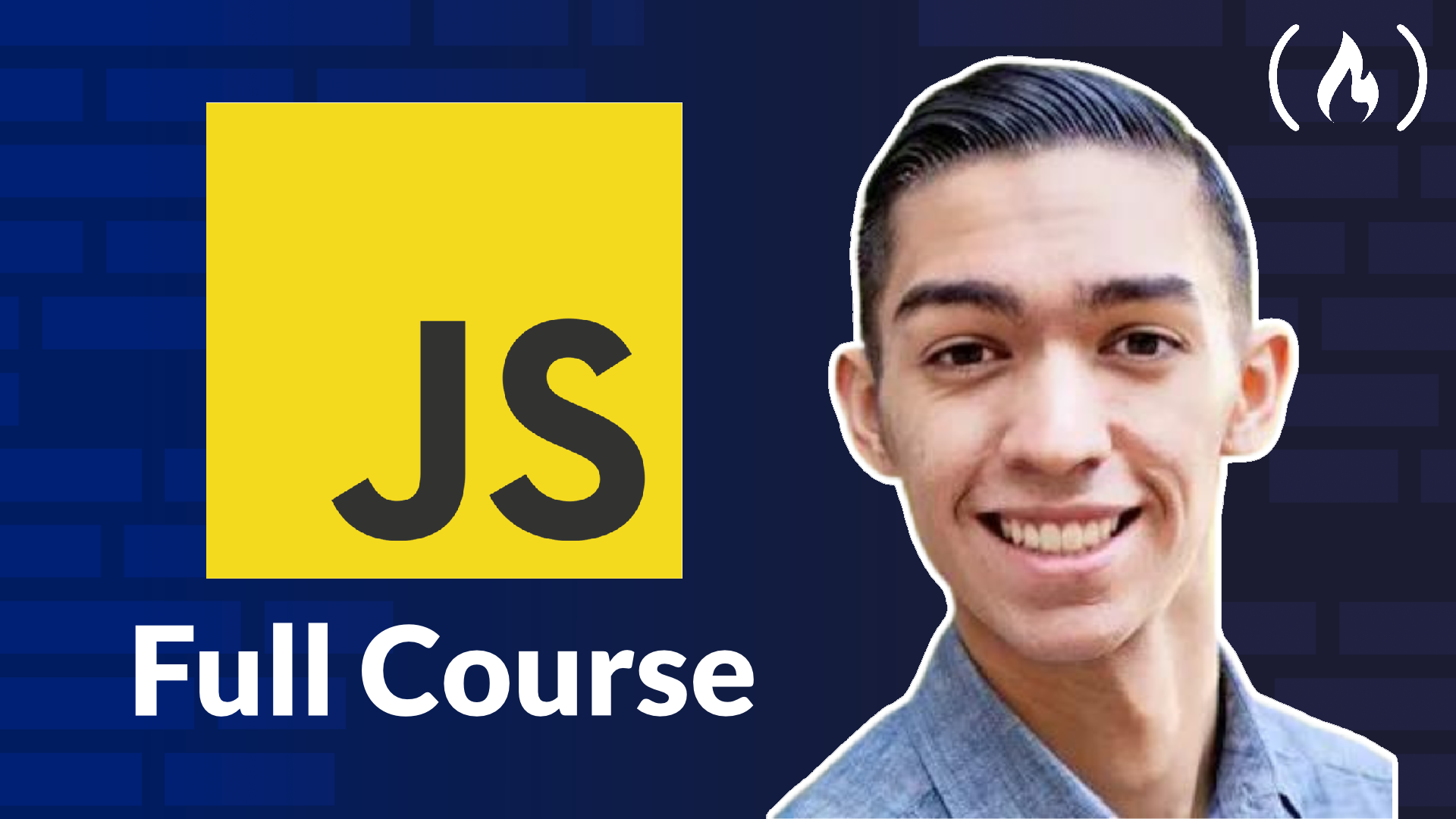JavaScript is a versatile and powerful programming language primarily used to create interactive and dynamic content on websites. It is one of the core technologies of the World Wide Web, alongside HTML and CSS. While HTML provides the structure of web pages and CSS controls their presentation, JavaScript brings them to life by enabling complex features and behaviors.
We just published a new JavaScript course on the freeCodeCamp.org YouTube channel that is designed to take beginners through the basics of JavaScript with clear explanations and quiz sections.
Steven Garcia created this course. While we already have a lot of JavaScript courses on our channel, Steven is an excellent teacher so we wanted to bring this course to our community.
Here are some reason you may want to learn JavaScript:
Ubiquity and Demand: JavaScript is everywhere. It's supported by all modern web browsers and is used by nearly every website. Learning JavaScript makes you a versatile developer capable of working on both the client-side (front-end) and server-side (back-end) through environments like Node.js.
Foundation for Other Technologies: Understanding JavaScript is important for working with various popular libraries and frameworks such as React, Angular, and Vue.js. These tools are widely used in the industry to build sophisticated web applications.
Career Opportunities: Proficiency in JavaScript can significantly enhance your job prospects. As one of the most in-demand programming languages, JavaScript skills are highly sought after by employers looking to build and maintain modern, dynamic websites and applications.
Versatility: JavaScript is not limited to web development. It’s also used in game development, mobile app development (using frameworks like React Native), and even in building desktop applications (using frameworks like Electron).
The course is broken into seven main sections. Here is what you will learn in each section:
Section 1: Getting Started
Introduction
What is JavaScript?
Setting up the Development Environment
Follow on social media
Section 2: JavaScript Variables
Variables
Constants
Primitive Types
Dynamic Typing
Objects
Arrays
Functions
Types of Functions
Summary of Variables
Section 3: JavaScript Operators
Intro to Operators
Arithmetic Operators
Assignment Operator
Comparison Operators
Equality Operators
The Ternary Operator
Logical Operators
Logical Operators with Non-booleans
Operator Precedence
Summary of Operator
Section 4: Control Flow
If-Else Statements
Switch-Case Statements
For Loops
While Loops
Do-while Loops
Infinite Loops
For-in Loops
For-of Loops
Break and Continue
Exercise: Max of two numbers
Exercise: FizzBuzz
Exercise: Even and Odd Numbers
Summary of Control Flow
Section 5: JavaScript Objects
Object Literals
Factory Functions
Constructor Functions
Objects are Dynamic
The Constructor Property
Functions are Objects
Value vs Reference types
Enumerating Properties of an Object
Cloning an Object
Garbage Collection
The Built in Math Function
String Methods
Template Literals
The Date Object
Summary of Objects
Section 6: JavaScript Arrays
Introduction to Arrays
Adding Elements
Finding Elements (Primitives)
Finding Elements (Reference Types)
Arrow Functions
Removing Elements
Emptying an Array
Combining and Slicing Arrays
Spread Operator
Iterating an Array
Joining Arrays
Sorting Arrays
Testing the Elements of an Array
Filtering an Array
Mapping an Array
Reducing an Array
Section 7: JavaScript Functions
Function Declarations vs Expressions
Hoisting
Arguments
The Rest Operator
Default Parameters
Getters and Setters
Try and Catch
Local vs Global Scope
Let vs Var
The ‘this’ keyword
Watch the entire course on the freeCodeCamp.org YouTube channel (4-hour watch).

